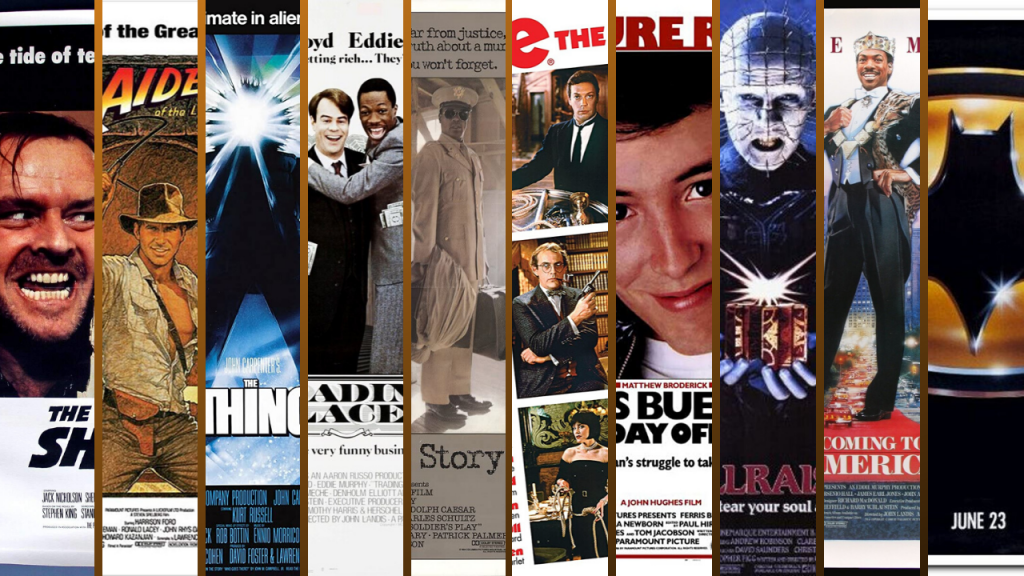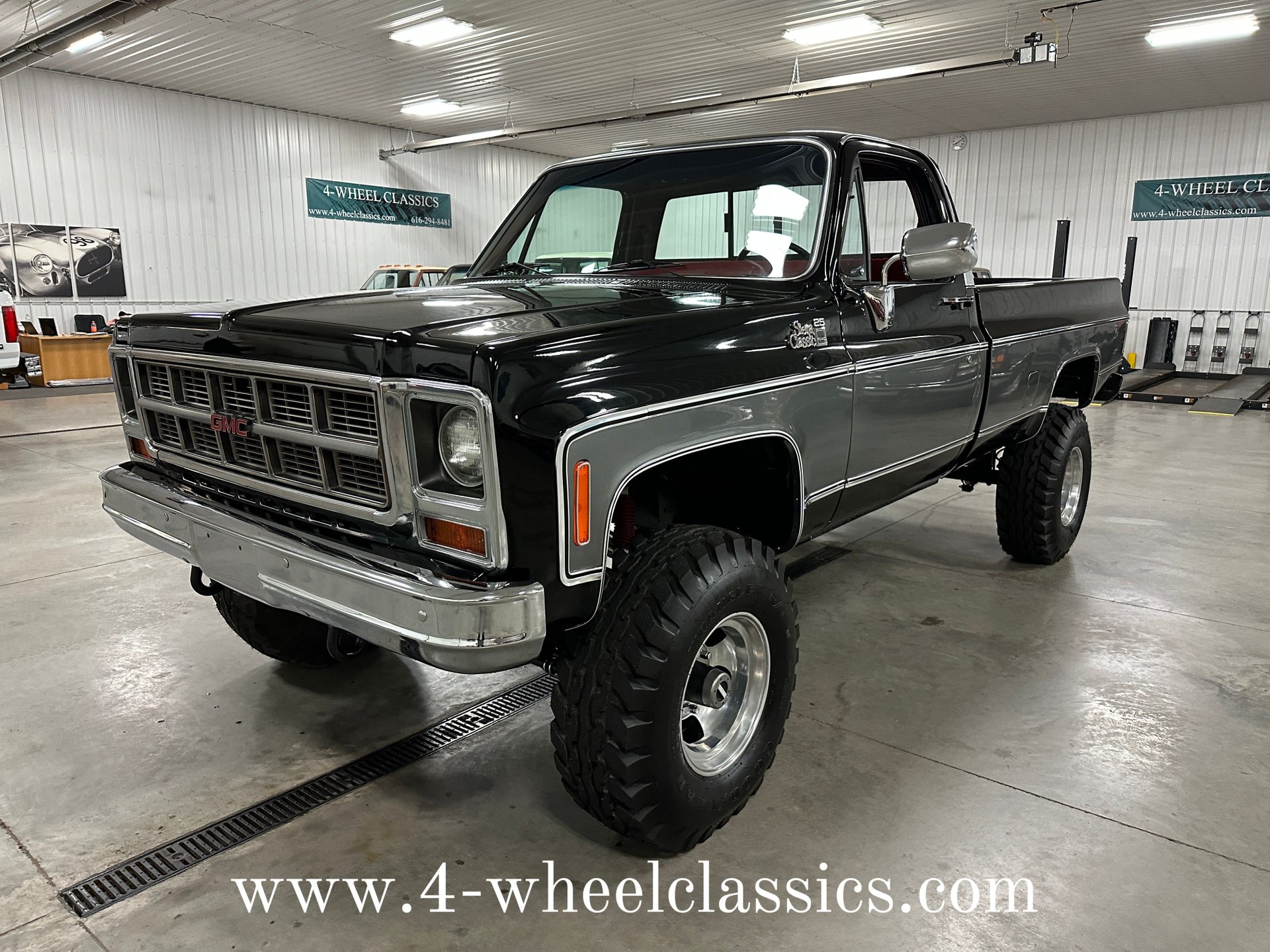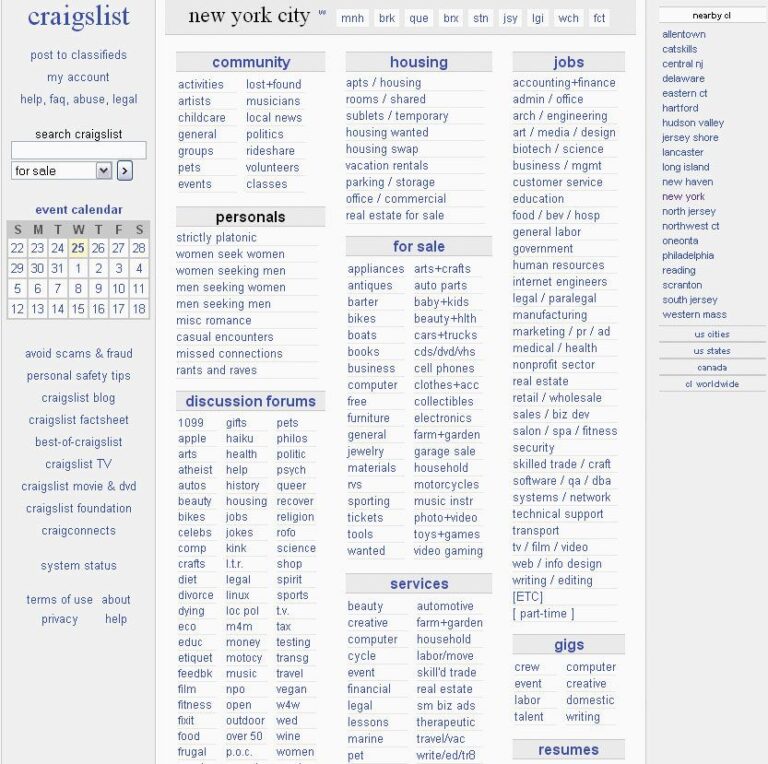1980’s Chevy Trucks For Sale: Your Ultimate Guide to Finding and Owning a Square Body Icon
1980’s Chevy Trucks For Sale: Your Ultimate Guide to Finding and Owning a Square Body Icon cars.truckstrend.com
The roar of a small-block V8, the unmistakable silhouette of a no-nonsense workhorse, and the undeniable pull of nostalgia – for many, the 1980s Chevy truck represents an era of rugged reliability and timeless design. Known affectionately as "Square Bodies" by enthusiasts, these C/K series pickups, Blazers, and Suburbans have transcended their original purpose as utilitarian vehicles to become highly sought-after classics. Whether you’re a seasoned collector, a first-time classic buyer, or simply seeking a durable and characterful vehicle for daily use or weekend adventures, the market for 1980s Chevy trucks is vibrant and diverse. This comprehensive guide will navigate you through the world of buying these iconic machines, from understanding the different models to what to look for, and how to secure your very own piece of automotive history.
Why the 1980s Chevy Truck Endures: The Square Body Legacy
1980’s Chevy Trucks For Sale: Your Ultimate Guide to Finding and Owning a Square Body Icon
The 1980s marked a significant period for Chevrolet’s C/K truck line, building on the third-generation platform introduced in 1973. While the basic design remained consistent, the 80s models saw refinements in styling, interior comfort, and powertrain options, making them highly desirable today. Their enduring popularity stems from several key factors:
- Timeless Aesthetics: The "Square Body" design is iconic. Its sharp lines, boxy fenders, and assertive stance embody a no-frills, honest approach to truck design that many modern vehicles lack. It’s a look that ages gracefully and stands out in a crowd.
- Rugged Reliability: These trucks were built to work. Their robust frames, durable powertrains (especially the venerable small-block Chevy V8s), and straightforward mechanicals mean they can endure significant mileage and neglect while remaining relatively easy to maintain and repair.
- Ease of Maintenance & Parts Availability: Thanks to their mechanical simplicity and the sheer volume produced, parts for 1980s Chevy trucks are abundant and relatively inexpensive. Most repairs can be tackled by a competent DIY mechanic, and a vast aftermarket offers everything from original equipment replacements to performance upgrades and custom accessories.
- Versatility & Customization: From lifted off-road monsters to slammed street cruisers, and from meticulously restored showpieces to patina-laden daily drivers, the Square Body platform is incredibly versatile. Its robust architecture and widespread popularity mean there’s a thriving community and endless possibilities for customization to suit any taste or purpose.
- Nostalgia Factor: For many, these trucks evoke memories of childhood, family road trips, or hard work on the farm or job site. They represent a simpler time and offer a tangible connection to the past.

Understanding the Models: A Buyer’s Guide to 80s Chevy Trucks
Before you start your search, it’s crucial to understand the various configurations and options available in 1980s Chevy trucks. This knowledge will help you identify the right truck for your needs and budget.
-
C/K Series Designation:

- C-Series: Denotes a two-wheel-drive (2WD) truck. Ideal for street driving, hauling, and fuel efficiency.
- K-Series: Denotes a four-wheel-drive (4WD) truck. Perfect for off-roading, adverse weather conditions, and heavier-duty work.
-
Weight Class/Capacity (Ton Rating):
- 10/1500: Light-duty (half-ton). Most common for personal use, available in various cab and bed configurations.
- 20/2500: Medium-duty (three-quarter-ton). Heavier frame, springs, and braking components, suitable for towing and heavier loads.
- 30/3500: Heavy-duty (one-ton). Often found as dually trucks with dual rear wheels, designed for maximum towing and payload capacity.
-
Body Styles:
- Regular Cab: The classic single-row seating. Available with short beds (6.5 ft) or long beds (8 ft).
- Extended Cab (Club Cab/Sportvan): Offered limited rear seating or extra storage space behind the front seats. Less common but sought after for added utility.
- Crew Cab: Four full doors with ample seating for up to six passengers. Highly desirable for families or those needing to transport a crew, but often command higher prices.
- K5 Blazer: The iconic full-size SUV, offering a removable hardtop (until 1989), two doors, and a versatile cargo area. Highly popular for off-roading and cruising.
- Suburban: The full-size, four-door SUV, offering extensive seating and cargo capacity, making it a great family hauler or tow vehicle.
-
Engine Options:
- V6: The 4.3L V6 was introduced later in the 80s, offering improved fuel economy but less power than the V8s.
- Small Block V8: The most common and popular choices:
- 305 (5.0L): A common base V8, adequate for light duty.
- 350 (5.7L): The legendary small-block, known for its reliability, power, and vast aftermarket support. This is often the preferred engine.
- Big Block V8:
- 454 (7.4L): Primarily found in 2500 and 3500 series trucks, offering massive torque for heavy hauling and towing.
- Diesel:
- 6.2L Diesel: Introduced in the early 80s, offering better fuel economy but less power than gasoline engines. Known for being robust but can be slower and less refined.
-
Transmission Options:
- Manual: SM465 (4-speed "granny gear" manual) and later NV3500 (5-speed manual) are common and very durable.
- Automatic: TH350 (3-speed), TH400 (3-speed, heavy-duty), and 700R4 (4-speed with overdrive, better for highway fuel economy).
-
Trim Levels: From the basic Custom Deluxe to the more upscale Scottsdale, Cheyenne, and top-tier Silverado, trim levels dictated interior amenities, chrome brightwork, and exterior styling cues.

Where to Find Your 80s Chevy Dream Truck
The hunt for a classic 80s Chevy truck can be an adventure in itself. Here are the most common and effective places to look:
-
Online Marketplaces:
- eBay Motors: Great for a wide selection, including project trucks, drivers, and fully restored examples.
- Craigslist/Facebook Marketplace: Excellent for finding local deals, often from private sellers. Be wary of scams and always inspect in person.
- Specialized Classic Car Sites: Bring a Trailer, ClassicCars.com, Hemmings, AutoTrader Classics often list higher-quality or more unique examples.
- Truck-Specific Forums & Groups: Many online forums and Facebook groups dedicated to Square Body trucks have "for sale" sections where enthusiasts list their vehicles.
-
Auctions:
- Major Auction Houses: Mecum, Barrett-Jackson, and others feature high-end, professionally restored trucks, often commanding premium prices.
- Local Auctions: Estate sales, government surplus auctions, or general auto auctions can sometimes yield hidden gems at lower prices, but often require quick decision-making and come with limited inspection opportunities.
-
Local Dealerships & Private Sellers:
- Classic Car Dealerships: Some dealerships specialize in vintage vehicles and may have 80s Chevy trucks in stock.
- Word of Mouth/Local Classifieds: Don’t underestimate the power of asking around or checking local bulletin boards. Some of the best deals are found this way.
What to Look For: A Pre-Purchase Inspection Checklist
Buying an older vehicle requires a thorough inspection. While the 80s Chevy trucks are robust, they are susceptible to certain issues due to age.
- Rust: This is the number one enemy of the Square Body. Check common rust-prone areas meticulously:
- Cab corners and rocker panels (below the doors).
- Fenders (especially around the wheel wells).
- Lower door edges.
- Bed floor and bed sides (especially behind the wheels).
- Tailgate.
- Frame rails (look for rot, especially near suspension mounts).
- Inner fenders and core support.
- Engine & Transmission:
- Cold Start: Listen for excessive smoke (blue = oil, white = coolant, black = fuel), knocking, or unusual noises.
- Leaks: Check under the truck for oil, coolant, or transmission fluid leaks.
- Test Drive: Ensure the engine pulls strong, idles smoothly, and the transmission shifts cleanly without slipping or harsh clunks. Check for proper engagement of 4WD (if applicable).
- Brakes & Suspension:
- Test the brakes for proper stopping power, no pulling, and firm pedal feel.
- Check for excessive steering play.
- Look for worn ball joints, tie rod ends, and shock absorbers.
- Interior:
- Dash cracks are common.
- Check seats for rips and tears.
- Test all electrical components: lights, gauges, wipers, radio, heater/AC.
- Undercarriage:
- Inspect the exhaust system for leaks or excessive rust.
- Check differentials for leaks.
- Look for signs of accident damage or previous poor repairs.
- Paperwork: Ensure the title is clean, matches the VIN on the truck, and there are no liens. Ask for service records if available.
Practical Advice: If you’re not mechanically inclined, always get a pre-purchase inspection (PPI) from a trusted mechanic familiar with older vehicles. This small investment can save you thousands down the road.
Pricing Your 80s Chevy Truck: What to Expect
The price of an 80s Chevy truck varies dramatically based on several factors: condition, mileage, originality, engine/transmission combination, body style (Crew Cab and K5 Blazers often command higher prices), trim level, and geographic location. The market has seen a steady increase in value for well-preserved or restored examples.
Here’s a general price guide, but note that these are estimates and can fluctuate:
Estimated Price Range for 1980s Chevy Trucks (C/K Series, K5 Blazer, Suburban)
| Model/Type (Example) | Condition: Project (Needs Major Work) | Condition: Driver (Usable, Needs TLC) | Condition: Good (Solid, Minor Flaws) | Condition: Excellent/Restored (Show Quality) |
|---|---|---|---|---|
| C10/C1500 (2WD) | $2,000 – $6,000 | $7,000 – $15,000 | $16,000 – $25,000 | $26,000 – $50,000+ |
| K10/K1500 (4WD) | $3,000 – $8,000 | $8,000 – $18,000 | $19,000 – $30,000 | $31,000 – $60,000+ |
| C20/C2500 (2WD) | $1,500 – $5,000 | $6,000 – $12,000 | $13,000 – $20,000 | $21,000 – $40,000+ |
| K20/K2500 (4WD) | $2,500 – $7,000 | $7,000 – $15,000 | $16,000 – $25,000 | $26,000 – $55,000+ |
| C30/C3500 (Dually) | $2,000 – $6,000 | $6,000 – $13,000 | $14,000 – $22,000 | $23,000 – $45,000+ |
| K5 Blazer (4WD) | $4,000 – $10,000 | $10,000 – $25,000 | $26,000 – $45,000 | $46,000 – $75,000+ |
| Suburban (C/K) | $2,500 – $7,000 | $7,000 – $18,000 | $19,000 – $30,000 | $31,000 – $60,000+ |
| Crew Cab (C/K) | $4,000 – $10,000 | $10,000 – $25,000 | $26,000 – $40,000 | $41,000 – $70,000+ |
Note: Prices are highly variable and reflect the current market. Trucks with rare options (e.g., specific engine/transmission combos, unique trim), very low mileage, or exceptional provenance will command higher prices.
Restoration vs. Driver: Making the Right Choice
When buying an 80s Chevy truck, you’ll generally encounter three types:
- Project Truck: These are the cheapest to buy but require significant time, money, and skill to restore. Ideal if you enjoy wrenching and have a long-term vision. Be realistic about the costs involved.
- Driver Quality: These trucks are running and driving, suitable for immediate use, but will likely have cosmetic flaws, minor mechanical issues, or deferred maintenance. They offer a good balance of usability and potential for improvement.
- Restored/Restomod: These trucks have undergone extensive restoration, often with modern upgrades (restomod). They are turn-key and beautiful but come with a premium price tag.
Actionable Insight: Assess your budget, mechanical skills, and intended use. If you want a weekend cruiser that needs minimal work, a "Good" condition driver might be perfect. If you dream of a show truck and have the resources, a "Restored" example saves you the hassle. If you’re on a tight budget and love to get your hands dirty, a "Project" could be rewarding.
Tips for a Successful Purchase and Ownership
- Set a Realistic Budget: Don’t just factor in the purchase price. Account for immediate maintenance, insurance, registration, and potential upgrades.
- Be Patient: The right truck might not appear overnight. Don’t rush into a purchase.
- Don’t Be Afraid to Walk Away: If a deal feels off, or the inspection reveals too many hidden problems, be prepared to move on. There will always be another truck.
- Consider Shipping Costs: If buying out of state, factor in the cost of transport, which can range from a few hundred to over a thousand dollars.
- Join the Community: Online forums, Facebook groups, and local car clubs dedicated to Square Bodies are invaluable resources for advice, parts, and camaraderie.
- Basic Maintenance is Key: Regular oil changes, fluid checks, and addressing small issues promptly will keep your 80s Chevy running strong for years. Parts are readily available through local auto parts stores, online retailers, and specialized classic truck suppliers.
Frequently Asked Questions (FAQ)
Q: Are parts still readily available for 1980s Chevy trucks?
A: Absolutely! Thanks to their popularity and the sheer number produced, both OEM and aftermarket parts are widely available. You can find almost anything you need, from engine components to body panels and interior trim.
Q: Can a 1980s Chevy truck be a reliable daily driver?
A: Yes, many people use them as daily drivers. With proper maintenance and addressing common wear items, they are very reliable. However, they lack modern safety features, fuel economy, and creature comforts.
Q: What’s the best engine for these trucks?
A: The 350 (5.7L) small-block V8 is generally considered the best all-around choice due to its balance of power, reliability, and vast aftermarket support for upgrades. For heavy towing, the 454 big-block is superior.
Q: How much does it cost to restore one?
A: A full, professional restoration can easily cost anywhere from $30,000 to $70,000+, often exceeding the market value of the finished truck unless it’s a rare model or a highly personalized build. DIY restoration can be much cheaper but requires significant time and skill.
Q: What are the most common rust spots to check?
A: Cab corners, rocker panels, lower door seams, fenders (especially around the wheel wells), and the bed floor are the most common areas. Always check the frame for structural rust as well.
Q: Is a 1980s Chevy truck a good investment?
A: While prices have been steadily climbing, particularly for well-preserved or restored examples, it’s generally best to buy a classic truck for the enjoyment of owning and driving it, rather than purely as an investment. Any appreciation in value is a bonus.
Conclusion
The appeal of the 1980s Chevy truck is undeniable. These Square Body legends offer a compelling blend of rugged good looks, enduring reliability, and a rich history that resonates with enthusiasts across generations. Whether you envision a capable workhorse, a head-turning show truck, or a nostalgic weekend cruiser, there’s an 80s Chevy out there waiting for you. By understanding the different models, knowing what to look for, and approaching the purchase with informed patience, you can confidently find and own a piece of automotive Americana that will bring years of enjoyment and stand as a testament to a timeless design. Happy hunting!






